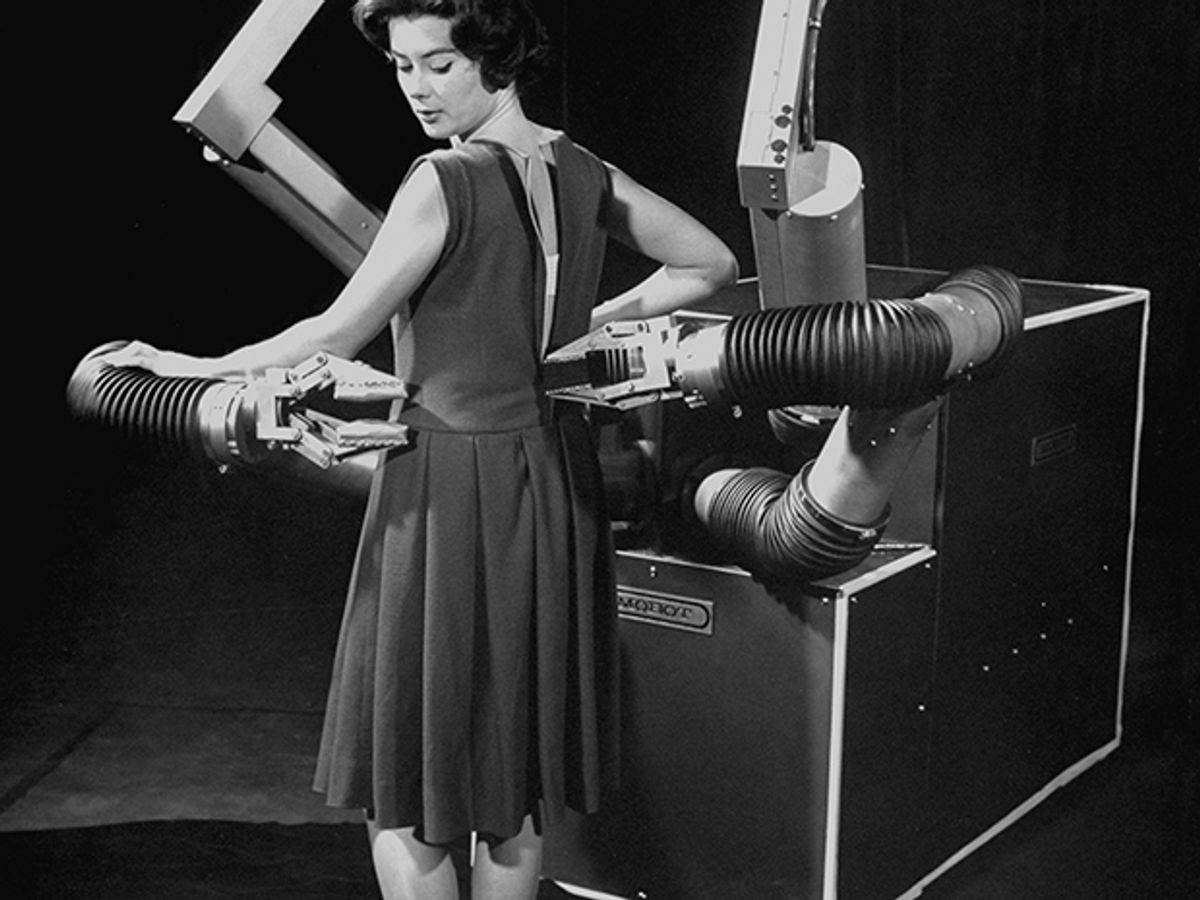
In the late 1950s, Sandia Laboratory was looking for a way to handle radioactive materials without putting humans in danger. The answer was the Mobot—short for either “remote robot” or “mobile robot”—a remotely operated system designed by Hughes Aircraft Co. in 1959 that offered a unique and effective combination of strength and dexterity.
A Sandia press release announcing the robot called it a “Replacement for Man,” but in fact the robot had no autonomy; it was teleoperated by a human sitting in front of a massive control console connected to the robot by a 60-meter cable. The Mark I version of the Mobot had a pair of meter-long hydraulically actuated arms capable of lifting up to 68 kilograms (150 pounds), along with adjustable-strength grippers. The entire system was mounted on a forklift.
A TV camera behind each arm provided a sort of stereo image, allowing the operator to estimate the relative distances to objects—a skill that apparently became second nature to experienced operators. Indeed, despite its complexity, the Mobot was quite easy to learn to control, at least according to a brochure: “Operators typically required 30 to 60 minutes for familiarization with the Mark 1 controls. After 5 to 10 hours of operation, they could perform any movement and position electrical equipment on benches. After 35 hours, they could position objects in three dimensions within 1/16 inch, consistently.”
The Mark II version of the robot was smaller and more versatile, designed for tasks that demanded a more nuanced and delicate touch. Each arm could lift only 11 kg, but the grippers featured inflatable inner surfaces; the air pressure could be adjusted to allow the robot to safely handle a range of objects from power tools to delicate glassware. In the above photo, the Mobot demonstrated its soft touch by helping actress Carol Christensen with her makeup and wardrobe; it did so “very gently,” Christensen told a reporter.
Hughes Aircraft imagined that Mobots would be used for all kinds of applications. Concept images showed Mobots fighting fires, doing underwater construction, and even assembling space stations and exploring the moon. Such visions of the future never came to be, but the Mobot did help further the concept of remotely operated vehicles and machines. Nearly 60 years later, the DARPA Robotics Challenge showed that even the most sophisticated robots are still essentially Mobots, needing a human in the loop to help them with complex manipulation tasks.
This article appears in the June 2017 print issue as “A Robot’s Delicate Touch.”
Part of a continuing series looking at old photographs that embrace the boundless potential of technology, with unintentionally hilarious effect.
